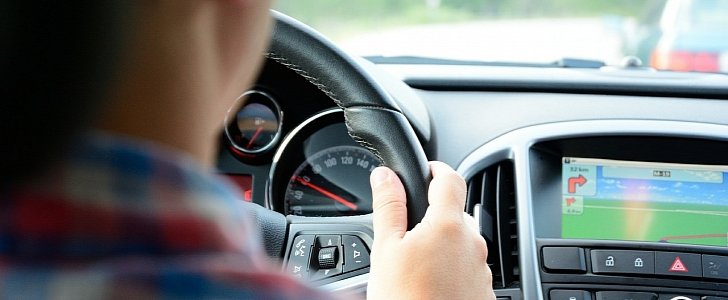We get a lot of studies related to cars, driving, and transportation, but none of them sounded weirder than this one. Apparently, a person's driving style is just as useful for identifying them as their fingerprints, their retina or their DNA. OK, maybe we've gone a little too far there, but you get the point.
There's this research carried out by a group of people from the Universities of Washington and California that has come up with a strange conclusion, even though if you think about it, it totally makes sense. Just by plugging a computer into the car's dashboard and monitoring a mere 16 sensors (including stuff like steering wheel position, brake pedal usage or throttle inputs), the authors of the study were able to identify who drove the car with 100 percent accuracy.
It all went like this: fifteen test subjects (human beings, like you and I) were asked to drive through an isolated parking lot, and then on a 50 mile trip around Seattle. To eliminate as many variables as possible, all 15 guinea pigs drove the same car (a 2009 sedan, if you must know) during the same time of the day (to minimize traffic fluctuations), and they even listened to the same audio playlist (which I believe was a mistake, since a real neutral approach would have been to allow each of the participants to choose their music, as while some might enjoy "uptempo pop music," others might find it irritating).
After all 15 rides had been concluded, the researchers took 90 percent from each of the collected chunks of data and ran them through a learning algorithm. When the machine had finished learning, it was asked to match the remaining 10 percent with one of the 15 profiles it had created using the larger part of the data.
And so it did. The computer didn't even have to use the data from all 16 sensors for a complete match. In fact, it kept its record of 100 percent accuracy even when only one parameter - the brake pedal - was analyzed. This made the paper's authors want to try something else, so instead of the extensive 50-mile trip, they cut it short to just 15 minutes of driving. Using all 16 sensors, the identification was still perfectly accurate, while the brake pedal alone offered 87 percent accuracy.
So, who could find this useful? Since cars like the Teslas already send driving data back to the company's HQ - to help with the development of the Autopilot feature - it's safe to say that it would be very easy for Musk's company to create a database with its customers' driving profiles. Later, in case something happened, that data could be used to determine who was driving the car, whether for an insurance claim or for more serious legal issues.
The real question - and something this group of researchers should work on next - is whether this system can be fooled, just like a polygraph can. Of course, the information would be totally irrelevant, but it would be cool to know, nevertheless.
It all went like this: fifteen test subjects (human beings, like you and I) were asked to drive through an isolated parking lot, and then on a 50 mile trip around Seattle. To eliminate as many variables as possible, all 15 guinea pigs drove the same car (a 2009 sedan, if you must know) during the same time of the day (to minimize traffic fluctuations), and they even listened to the same audio playlist (which I believe was a mistake, since a real neutral approach would have been to allow each of the participants to choose their music, as while some might enjoy "uptempo pop music," others might find it irritating).
After all 15 rides had been concluded, the researchers took 90 percent from each of the collected chunks of data and ran them through a learning algorithm. When the machine had finished learning, it was asked to match the remaining 10 percent with one of the 15 profiles it had created using the larger part of the data.
And so it did. The computer didn't even have to use the data from all 16 sensors for a complete match. In fact, it kept its record of 100 percent accuracy even when only one parameter - the brake pedal - was analyzed. This made the paper's authors want to try something else, so instead of the extensive 50-mile trip, they cut it short to just 15 minutes of driving. Using all 16 sensors, the identification was still perfectly accurate, while the brake pedal alone offered 87 percent accuracy.
So, who could find this useful? Since cars like the Teslas already send driving data back to the company's HQ - to help with the development of the Autopilot feature - it's safe to say that it would be very easy for Musk's company to create a database with its customers' driving profiles. Later, in case something happened, that data could be used to determine who was driving the car, whether for an insurance claim or for more serious legal issues.
The real question - and something this group of researchers should work on next - is whether this system can be fooled, just like a polygraph can. Of course, the information would be totally irrelevant, but it would be cool to know, nevertheless.

